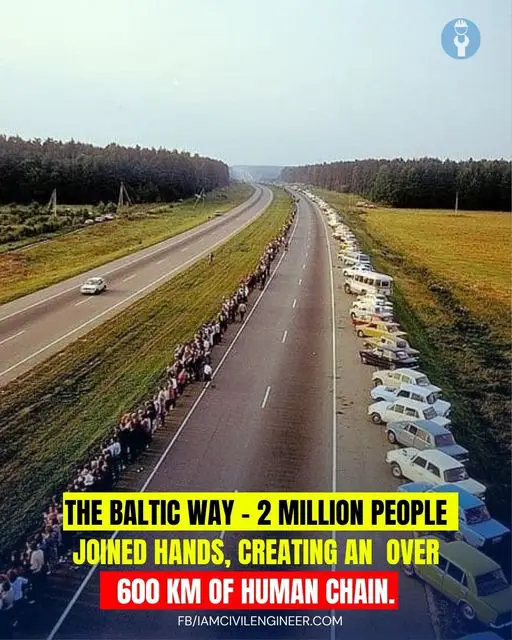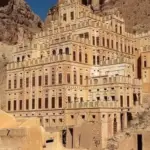In 1989, a momentous event unfolded that would forever leave its mark on the annals of history. Known as “The Baltic Way”, this extraordinary demonstration saw nearly 2 million people come together to create a breathtaking human chain. Spanning over 600 kilometers, this unbroken line of unity linked the capital cities of Vilnius in Lithuania, Tallinn in Estonia, and Riga in Latvia.

A Stand Against Oppression
The Baltic Way was not merely a symbolic act; it was a bold statement against oppression. The people of Estonia, Latvia, and Lithuania sought independence from the Soviet Union, which had annexed the three Baltic states during World War II. For decades, the citizens of these nations endured the suppression of their cultures, languages, and identities under Soviet rule. Yet, the spirit of freedom remained unbroken.
By joining hands, millions demonstrated their determination to reclaim their sovereignty and make their voices heard on the global stage. This peaceful yet powerful protest resonated far beyond the Baltic region, showcasing the indomitable human spirit.
The Historical Context
The date chosen for this remarkable event—August 23, 1989—held deep historical significance. It marked the 50th anniversary of the Molotov-Ribbentrop Pact, a secret agreement between Nazi Germany and the Soviet Union that had led to the occupation of the Baltic states. By commemorating this dark chapter in their history, the participants of the Baltic Way sent a clear message: the time had come to right the wrongs of the past.
Organizing a Remarkable Feat
The logistics behind the Baltic Way were nothing short of extraordinary. Coordinated by the Popular Front movements in the three countries—Sąjūdis in Lithuania, Rahvarinne in Estonia, and Tautas fronte in Latvia—the event required meticulous planning and immense collaboration. Despite the challenges, the turnout surpassed expectations, with men, women, and children of all ages coming together to stand hand in hand.
Participants traveled from towns and villages, some journeying great distances to join the chain. The human chain passed through cities, fields, and forests, creating a stunning visual of solidarity that captured the world’s attention.
A Global Impact
The Baltic Way served as an inspiration to other movements for freedom and democracy around the world. It demonstrated the power of peaceful protest and the strength of unity in the face of oppression. The event also drew widespread international attention to the plight of the Baltic states, putting pressure on the Soviet Union to address their demands for independence.
Within two years of the Baltic Way, all three Baltic nations achieved their long-sought independence, marking the beginning of the dissolution of the Soviet Union.
A Legacy of Hope and Resilience
Today, the Baltic Way is remembered as a defining moment in the struggle for freedom. It symbolizes the courage and determination of people united by a common cause, proving that change is possible when individuals come together in solidarity.
Like Us on Facebook!
In 2009, UNESCO recognized the Baltic Way by including it in the Memory of the World Register, preserving its legacy for future generations. The event continues to inspire people around the globe to stand up for their rights and work collectively toward a brighter future.
Subscribe Us on YouTube!
The Baltic Way was more than just a human chain; it was a chain of hope, resilience, and unwavering belief in the power of unity.



















